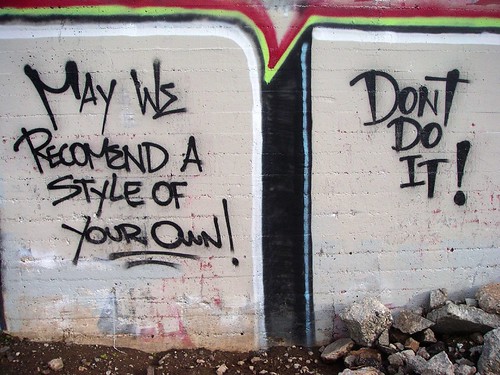 How are you offering value to your customers? How is your business doing it differently from your competitors and peers?
How are you offering value to your customers? How is your business doing it differently from your competitors and peers?
Are you taking their service and adding a slight twist to it, or are you thinking of ways to separate you from the many other similar approaches that others are using?
“Customers” doesn’t necessarily need to refer to people paying for your services, either. Customers could be readers of your blog; or connections on Twitter; or watchers of your YouTube videos.
While they may not pay you hard cash for your “service” (blog, tweets, videos, etc), they are investing their time in you; time that could be spent elsewhere.
So how are you rewarding that? Are you? How about Easter Eggs as rewards (as in the virtual hidden message version)?
Some of the ideas I’ve been thinking of I’ll be putting into play very soon. For example, if you’re connected to me via my Facebook Page, you’ll receive something in the next 5-7 days that’s tied into Facebook and won’t be available elsewhere. Sure, someone may share it after it’s public, but until (or if) that happens, you’ll only get that something on Facebook.
Or Twitter. One of the ways that I want to use Twitter more is by time-stamping a tweet, where there’ll be a surprise for the first X amount of people to click through to a link and download area for a limited edition Twitter ebook, or similar.
Or this blog. I’m in the process of a “relaunch”, if you like, with a new design and a newsletter, just to kick things off. If you subscribe to the newsletter, occasionally I’ll pick a subscriber and send something really cool their way that’s tied into the topics we talk about in the newsletter.
The same goes with the SRM Group – we’ll be looking at ways to reward social responsibility, whether that’s on Facebook or any other social outpost.
These are just some simple, basic ways to use Easter Eggs in social media, to say thank you for your support. Hopefully each one will be beneficial, because it’ll be tied into the platform in question.
Now, imagine if you turned that over to your business to your most loyal customers? It could be offline or online – it depends where you have a bigger presence.
Instead of giving 10% off your latest product or a two-for-one offer, why not give something your customer really wants? After all, anyone can give a discount but only those that care give a benefit.
- Accessories that you’d normally use as an add-on sale – can you take a hit and give them as part of the overall sale?
- Guidebooks for cars – can your garage/service centre give them away to a customer for their first service?
- A milestone order from a customer or supplier – can you give them a relevant partner product as well as the ordered one?
Every action you take to thank loyalty has a core reaction of extra loyalty. Get extra loyalty – well, the sky’s the limit then.
Yes?

 I’ve been looking at a lot of businesses lately and watching with interest as they adapt (or don’t) to today’s business world.
I’ve been looking at a lot of businesses lately and watching with interest as they adapt (or don’t) to today’s business world.
